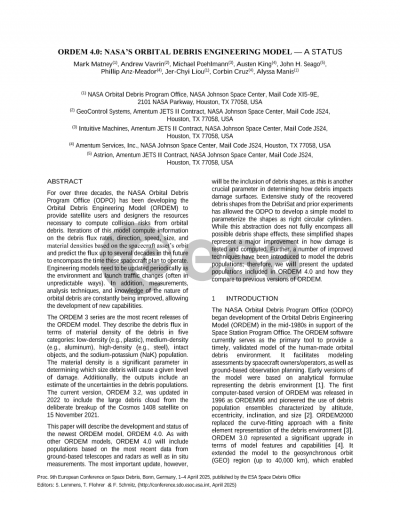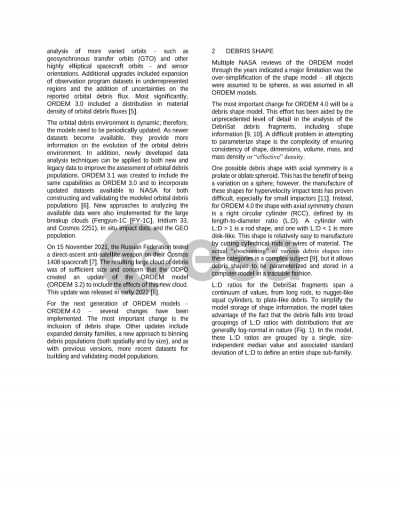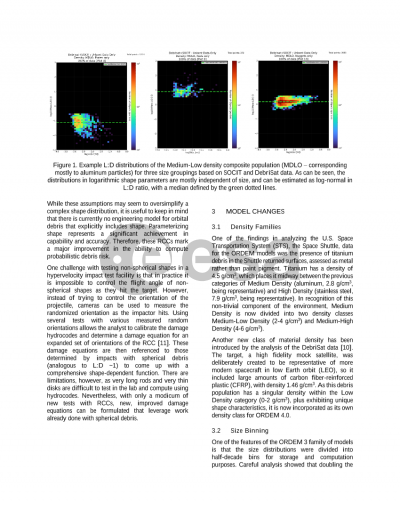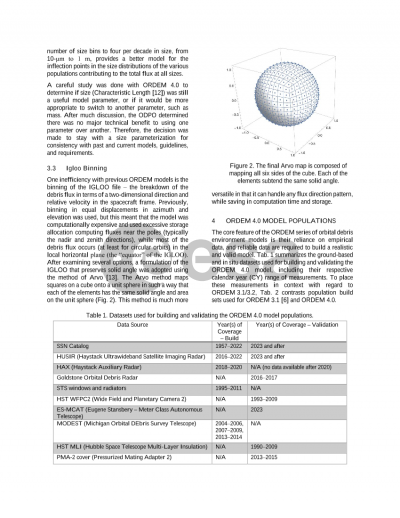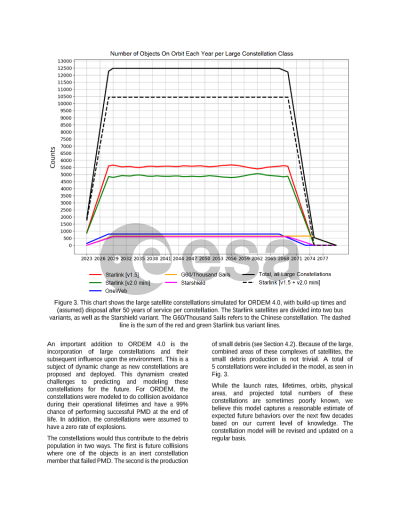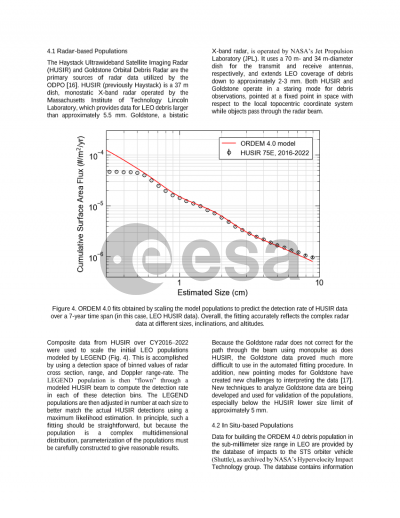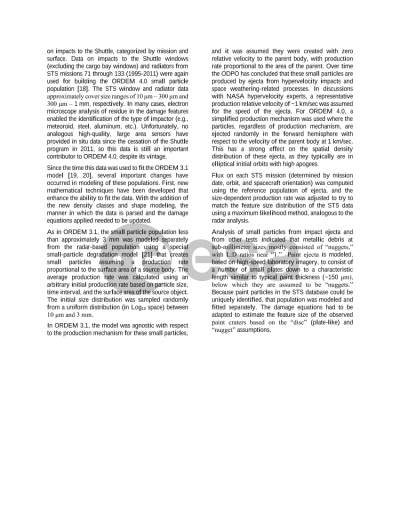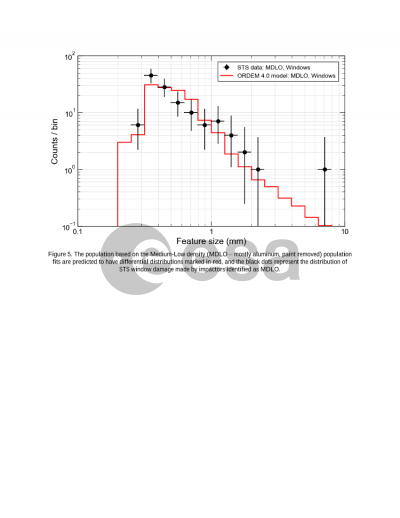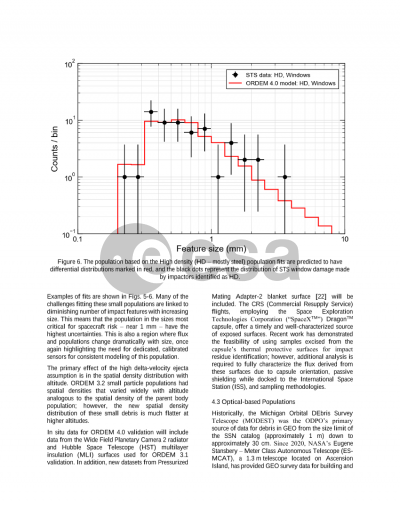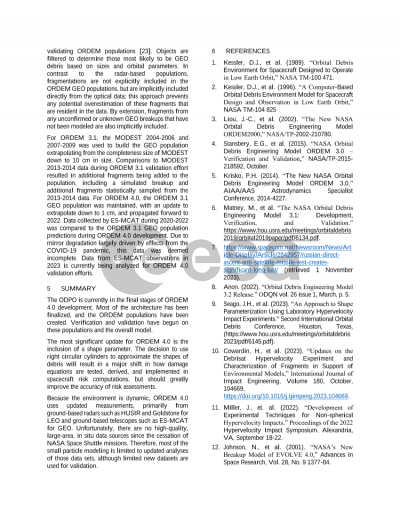Document details

Abstract
For over three decades, NASA’s Orbital Debris Program Office (ODPO) has been developing Orbital Debris Engineering Models (ORDEM) to provide satellite users and designers the resources necessary to compute collision risks from orbital debris. These models compute information on the debris flux rates, direction, speed, size, and material densities based on the spacecraft asset’s orbit and predict the flux up to several decades in the future to encompass the time these spacecraft plan to operate. Engineering models need to be updated periodically as the environment and launch traffic changes (often in unpredictable ways). In addition, measurements, analysis techniques, and knowledge of the nature of orbital debris are constantly being improved, allowing the development of new capabilities.
The ORDEM 3 series are the most recent releases of the ORDEM model. They describe the debris flux in terms of material density of the debris in five categories: low-density (e.g., plastic), medium-density (e.g., aluminum), high-density (e.g., steel), intact objects, and the sodium-potassium (NaK) population. The material density is a significant parameter in determining which size debris will cause a given level of damage. Additionally, the outputs include an estimate of the uncertainties in the debris populations. The current version, ORDEM 3.2, was updated in 2022 to include the large debris cloud from the deliberate breakup of the Cosmos 1408 satellite on 15 November 2021.
This paper will describe the development and status of the newest ORDEM model, ORDEM 4.0. As with other ORDEM models, ORDEM 4.0 will include populations based on the most recent data from ground-based telescopes and radars as well as in situ measurements. The most important update, however, will be the inclusion of debris shapes, as this is another very important parameter in determining how debris impacts damage surfaces. Extensive study of the recovered debris shapes from the DebriSat and prior experiments has allowed the ODPO to come up with a simple model to parameterize the shapes as right circular cylinders. While the abstraction of these simple shapes do not fully encompass all possible debris shape effects, they represent a major improvement in how damage is tested and computed. Further, a number of improved techniques have been introduced to model the debris populations; therefore, we will present the updated populations included in ORDEM 4.0 and how they compare to previous versions of ORDEM.
Preview
